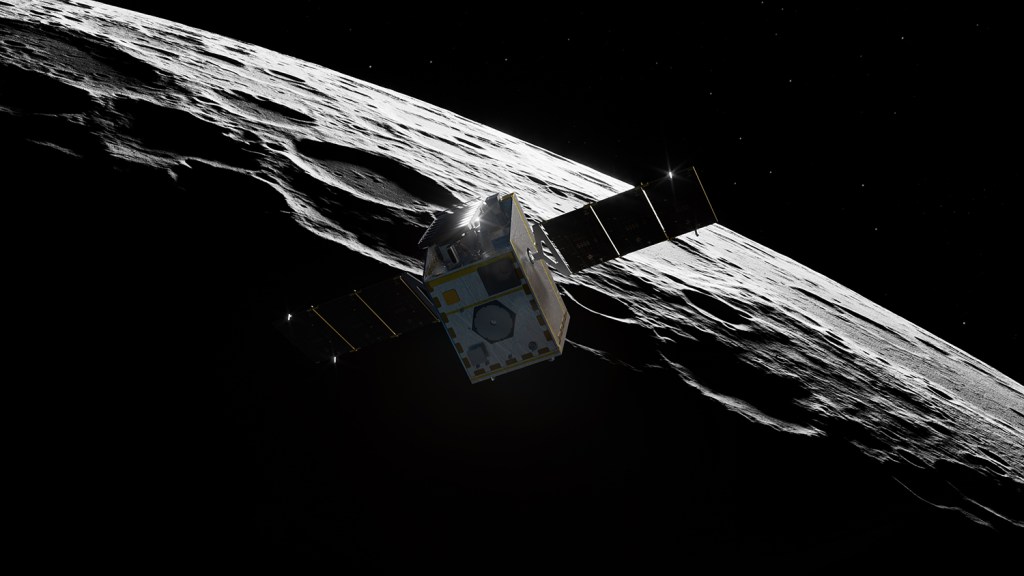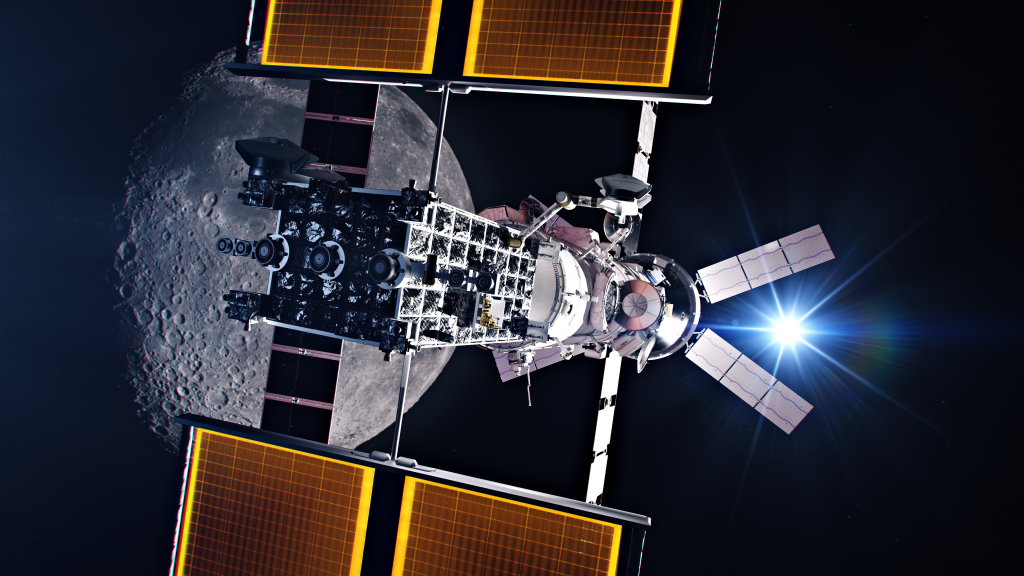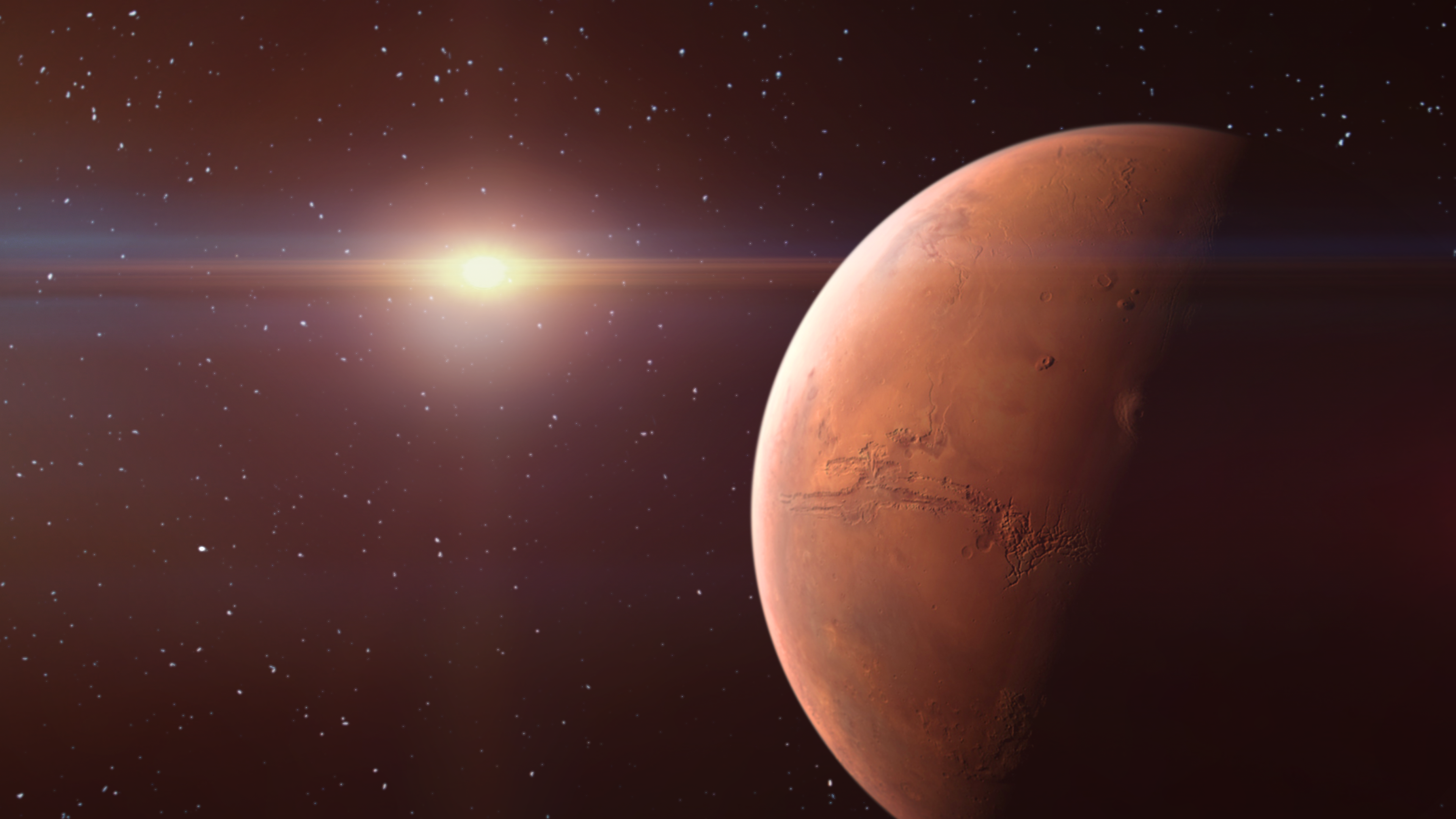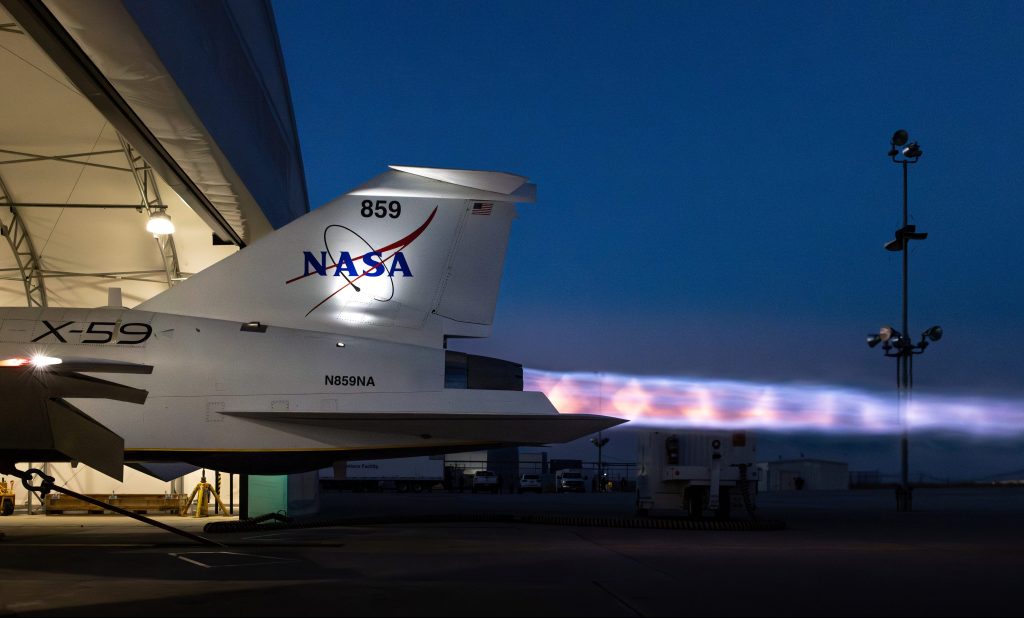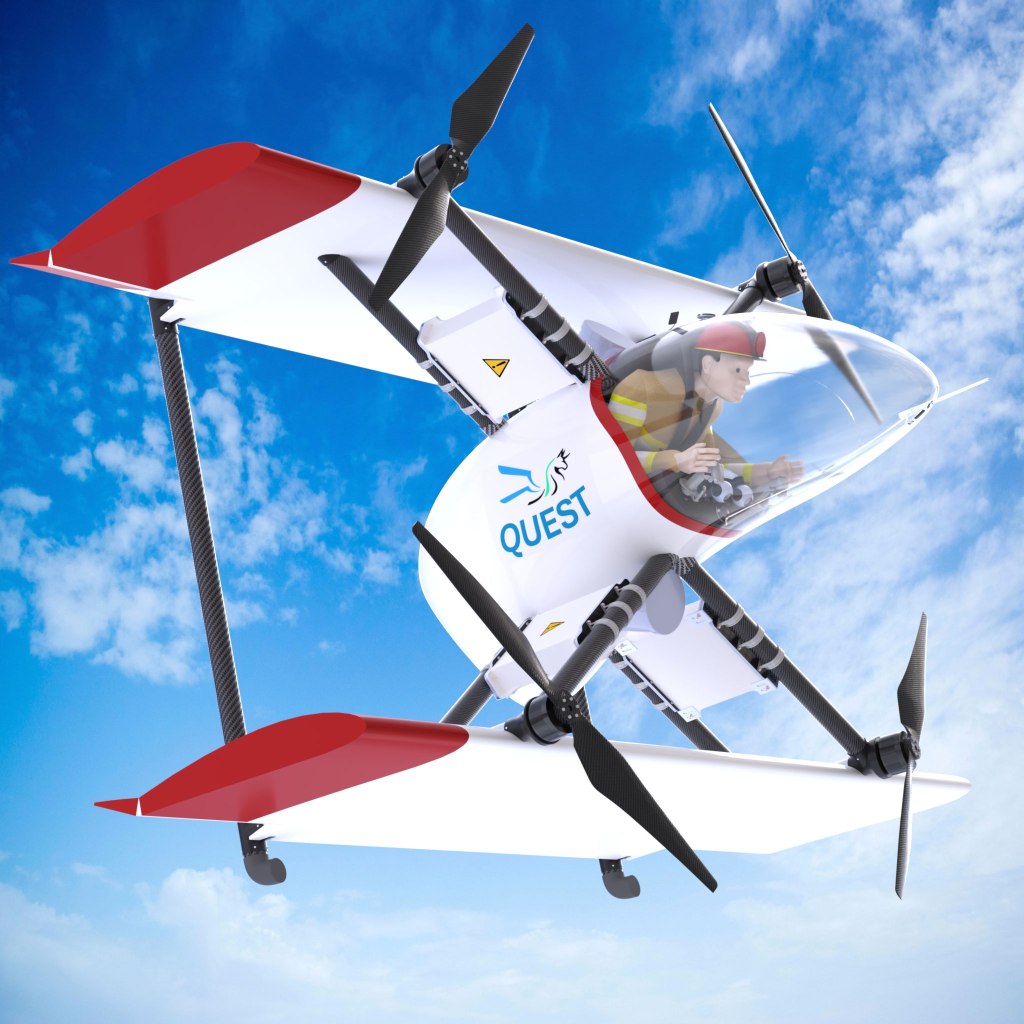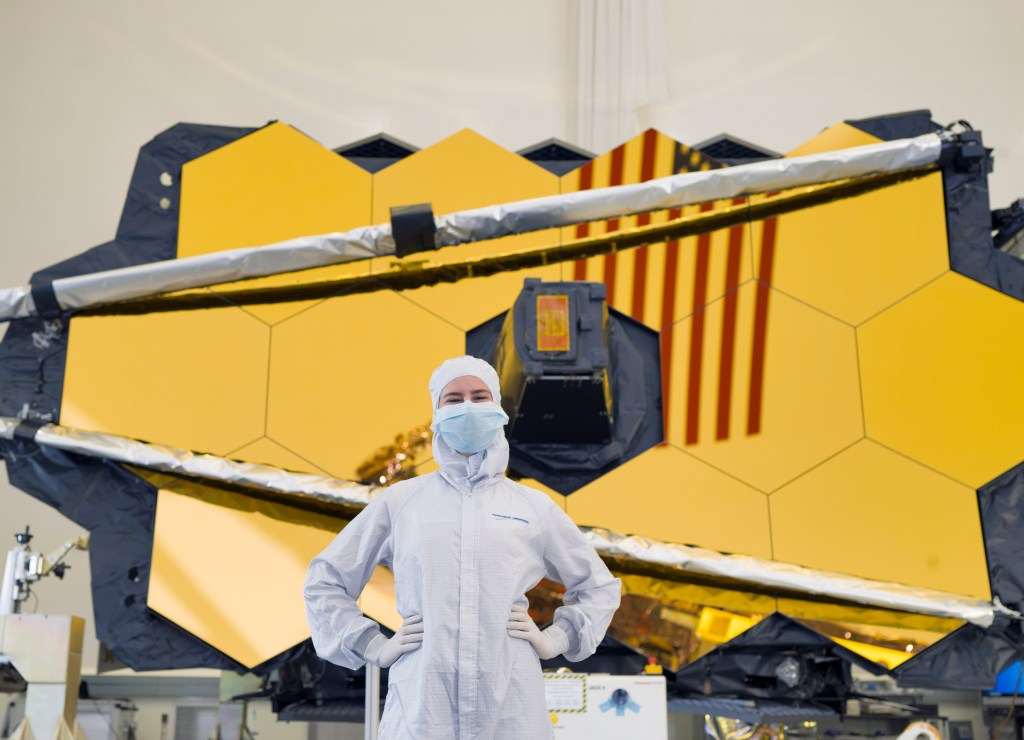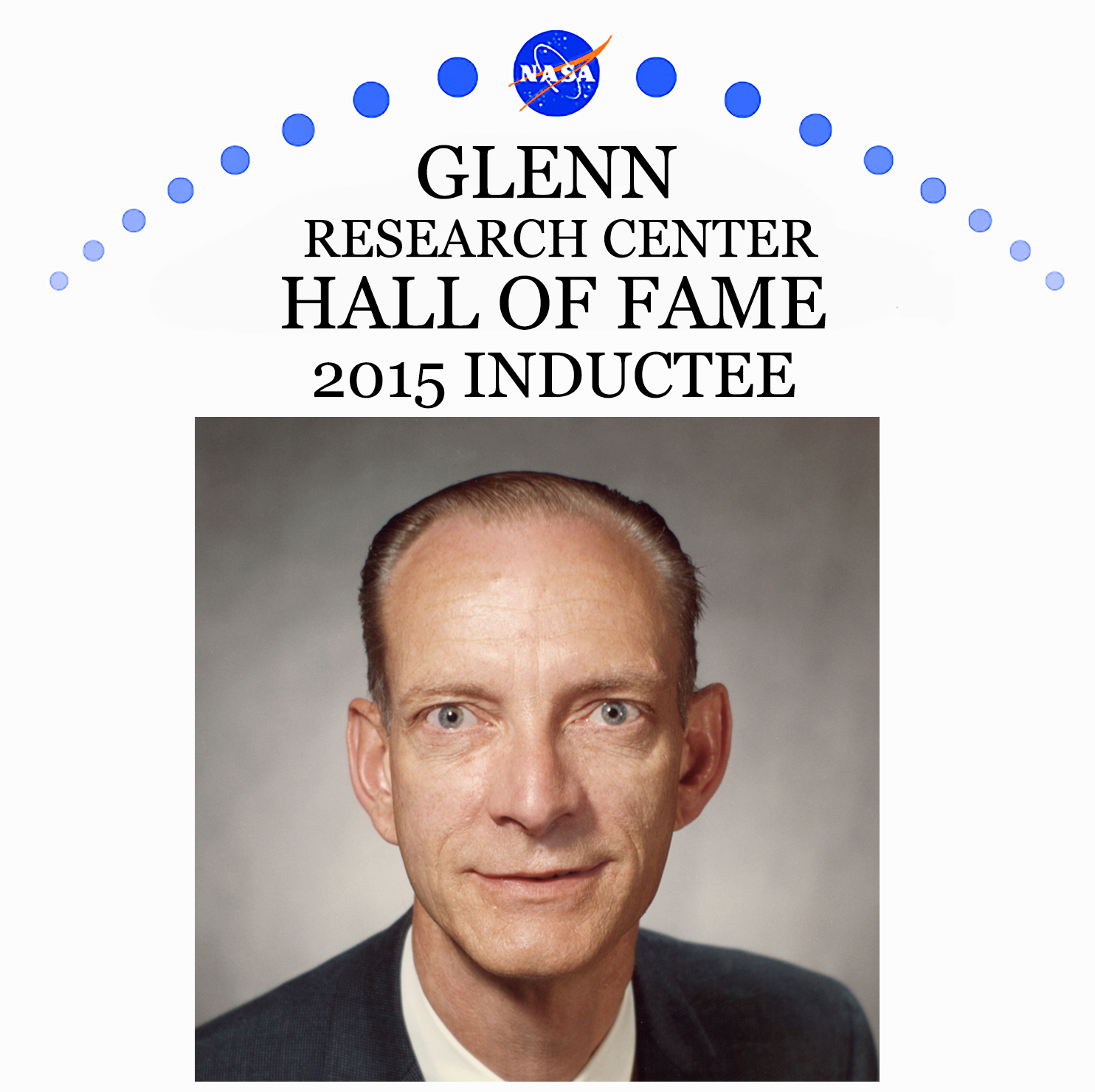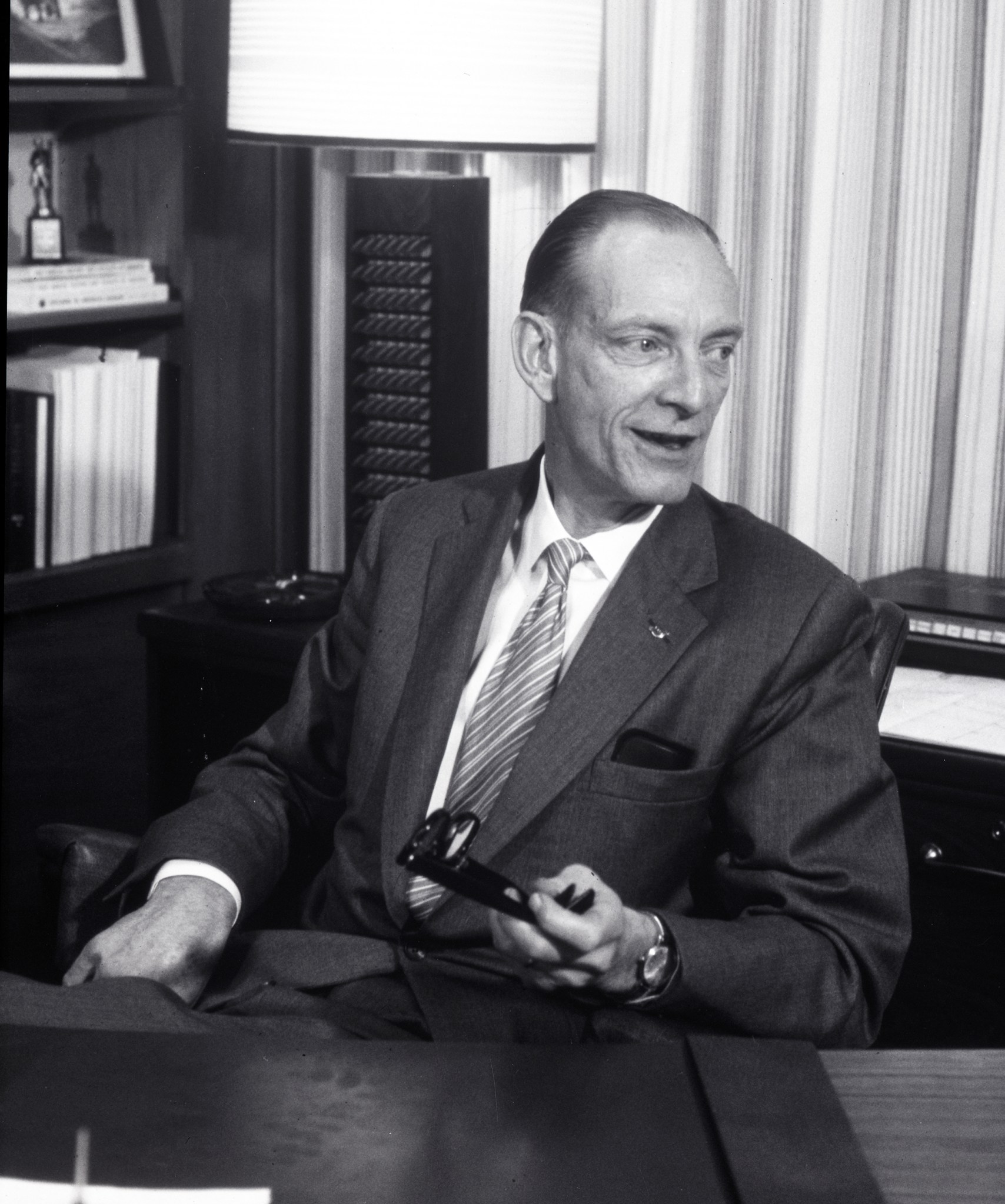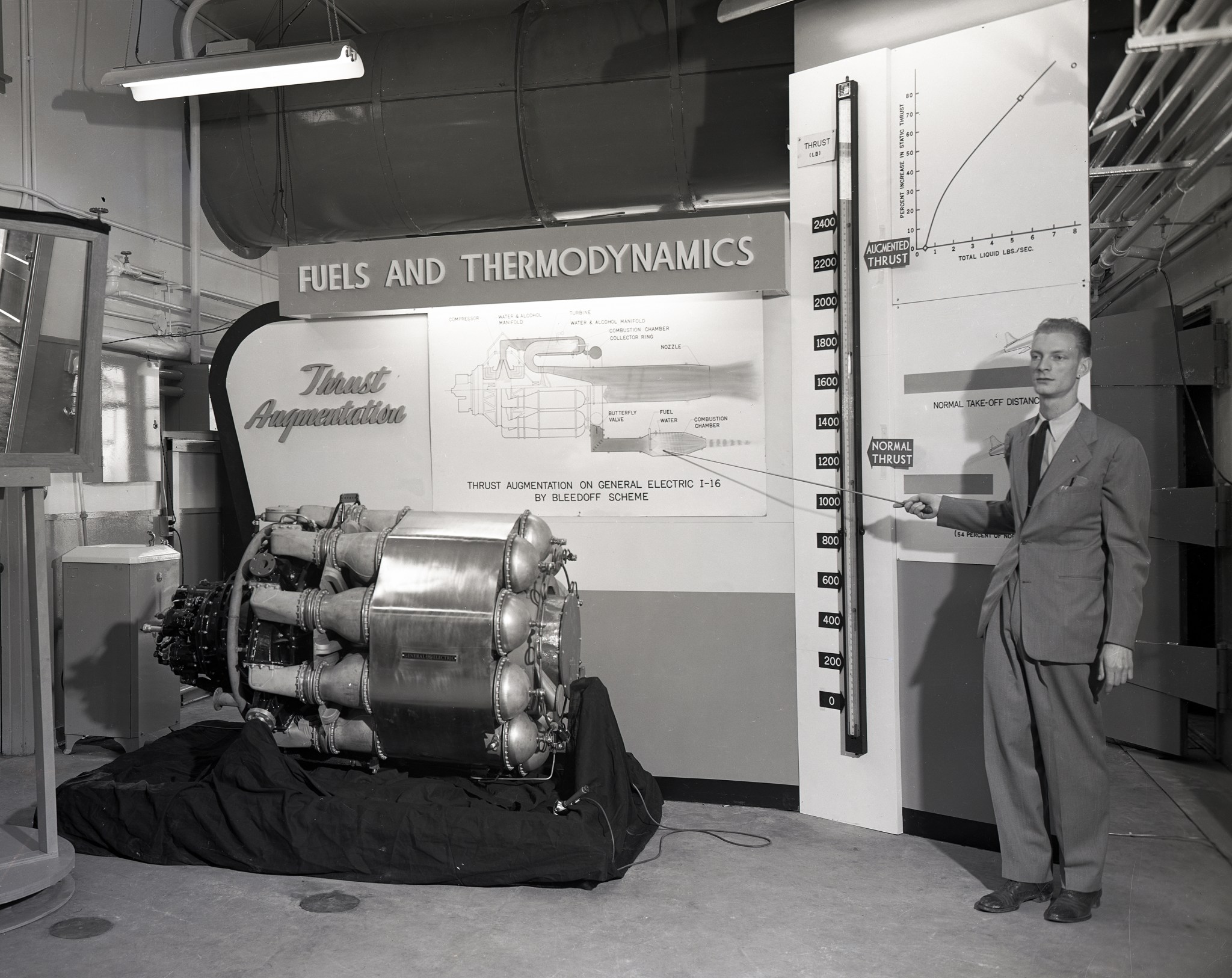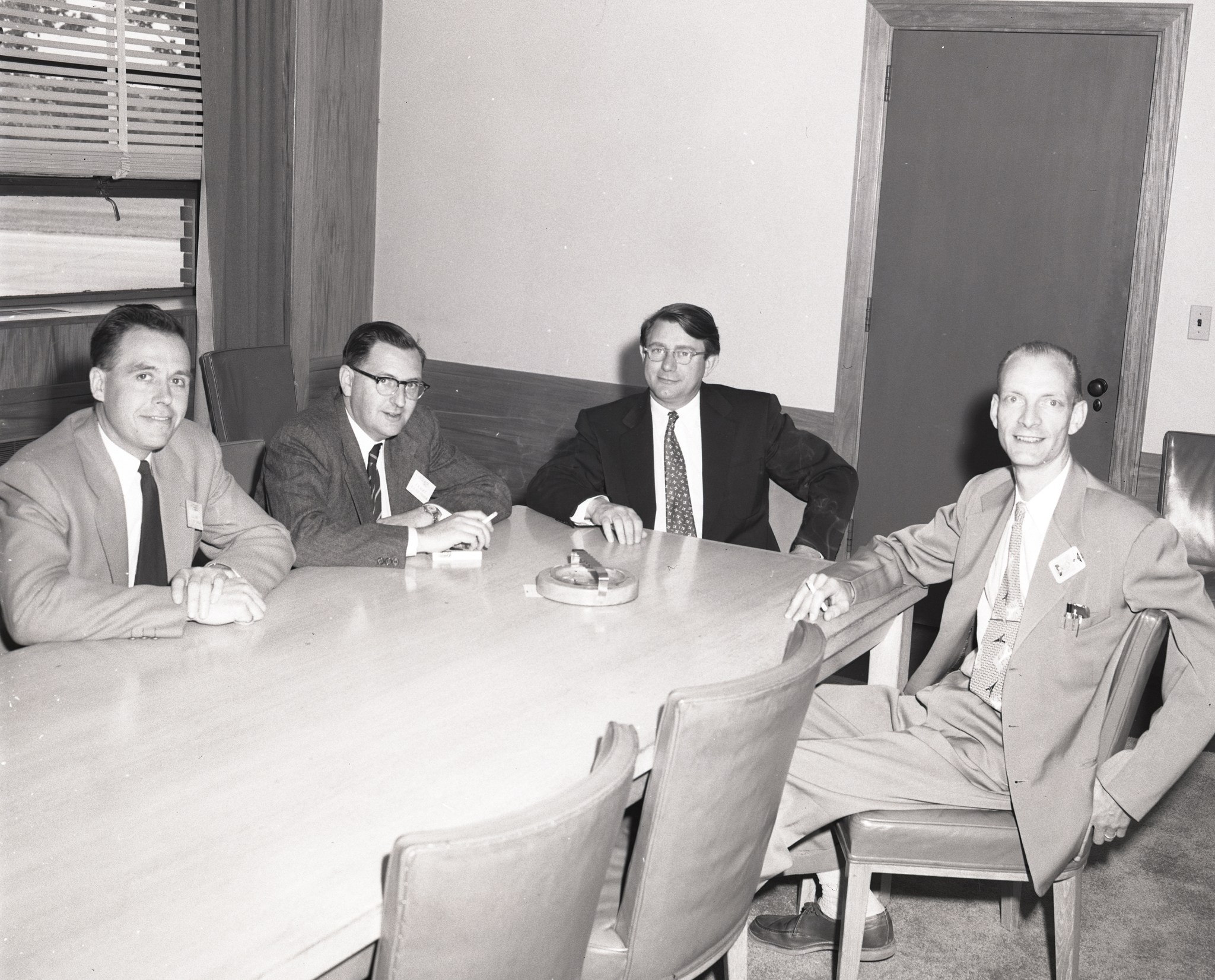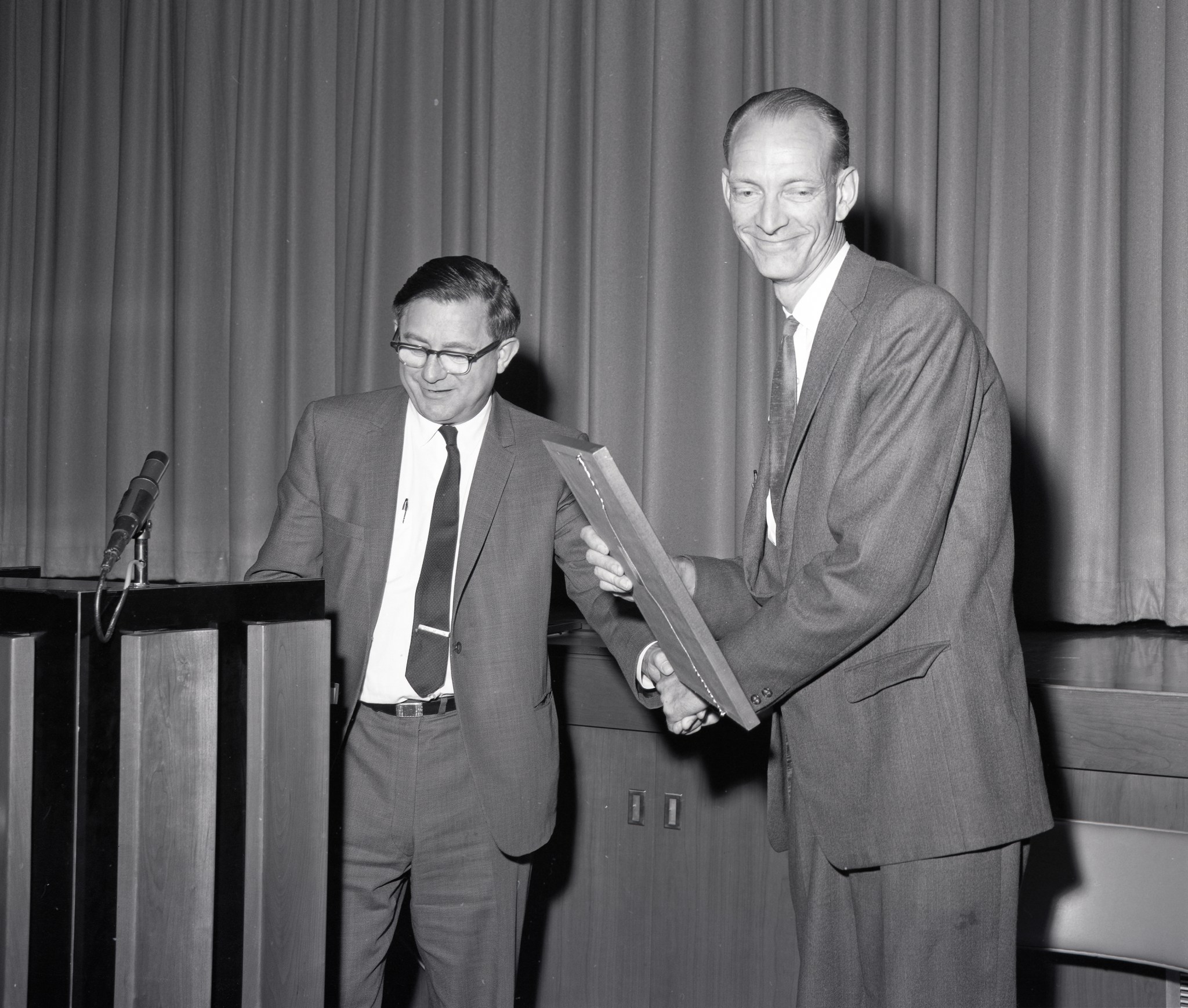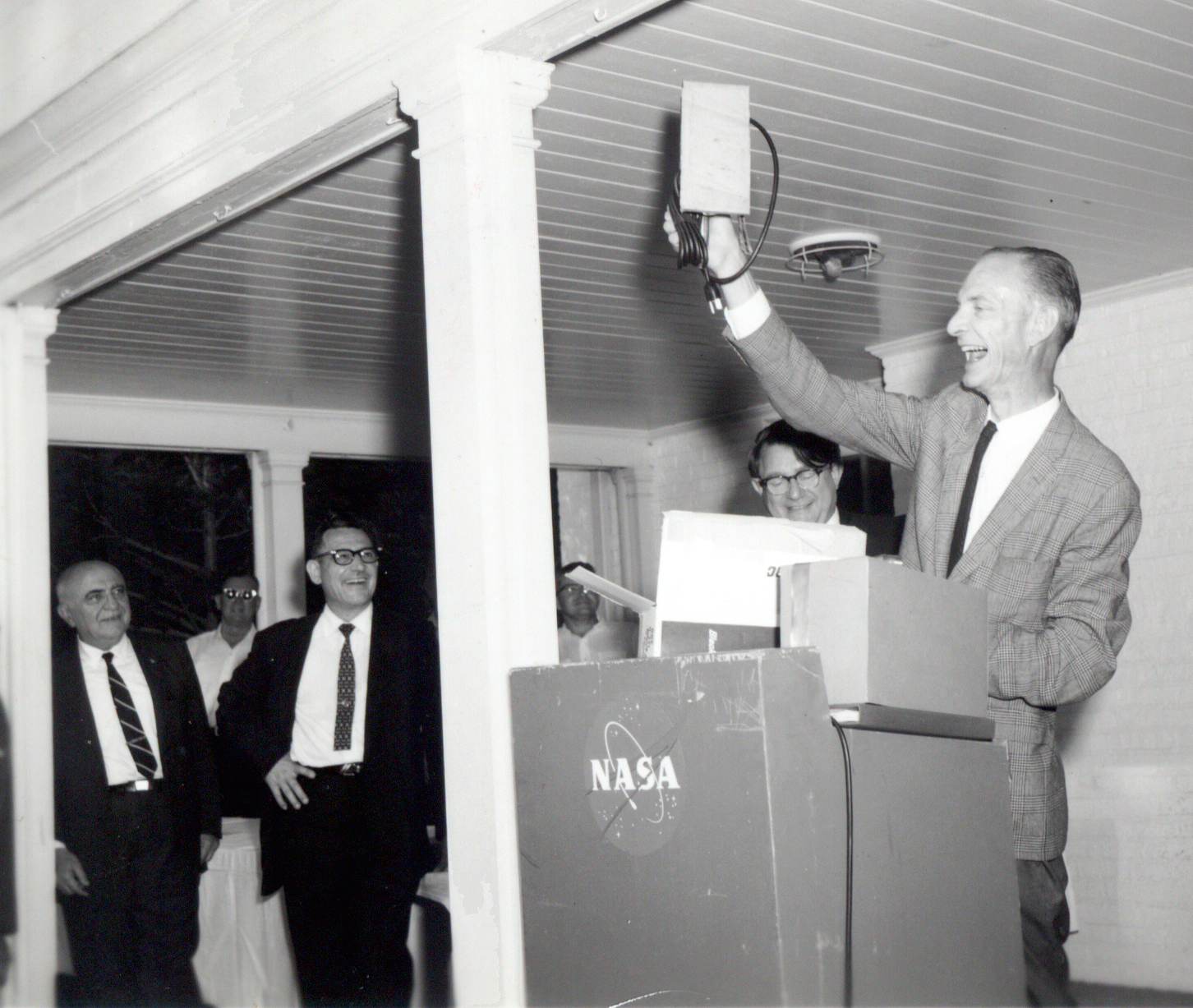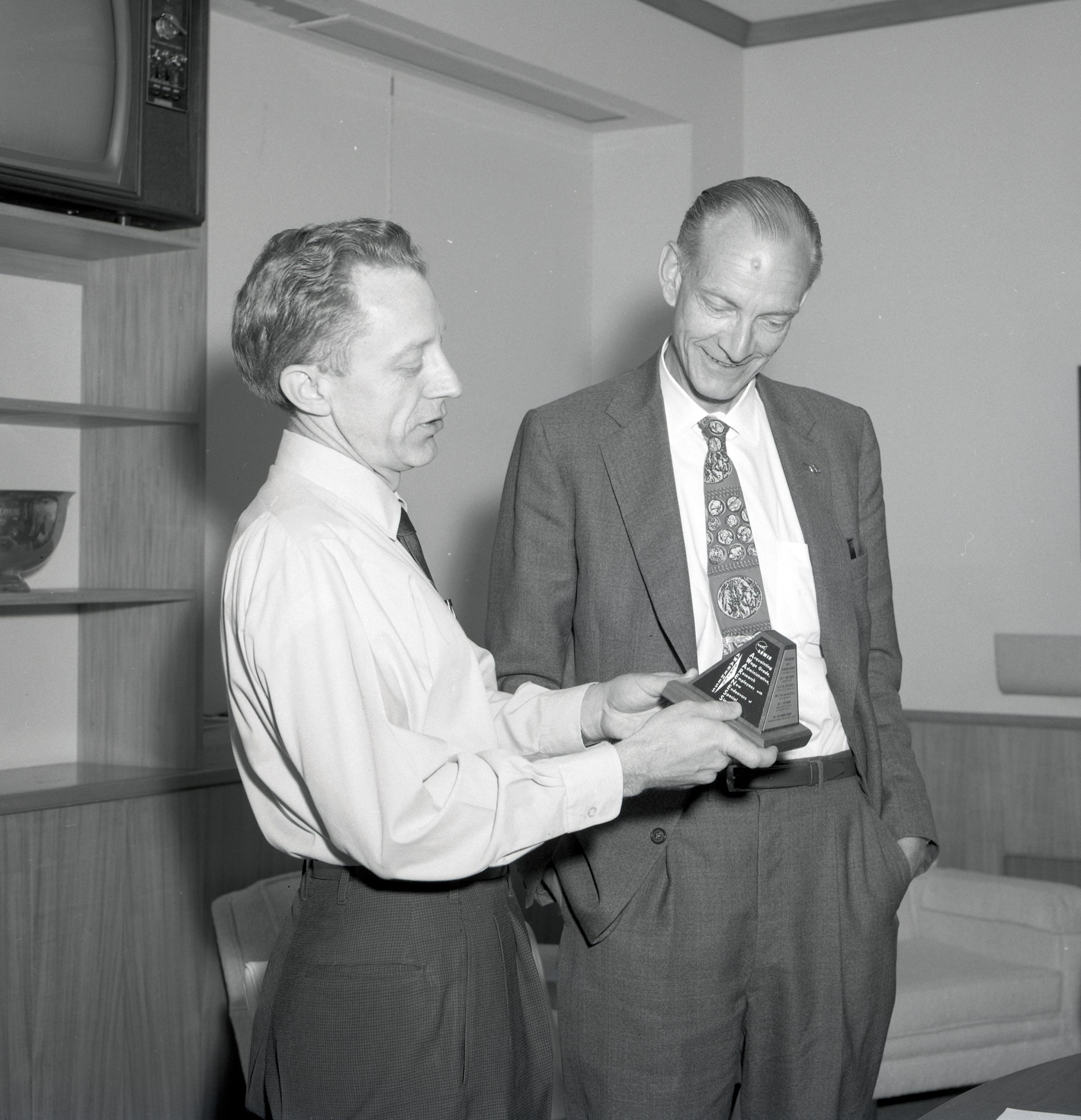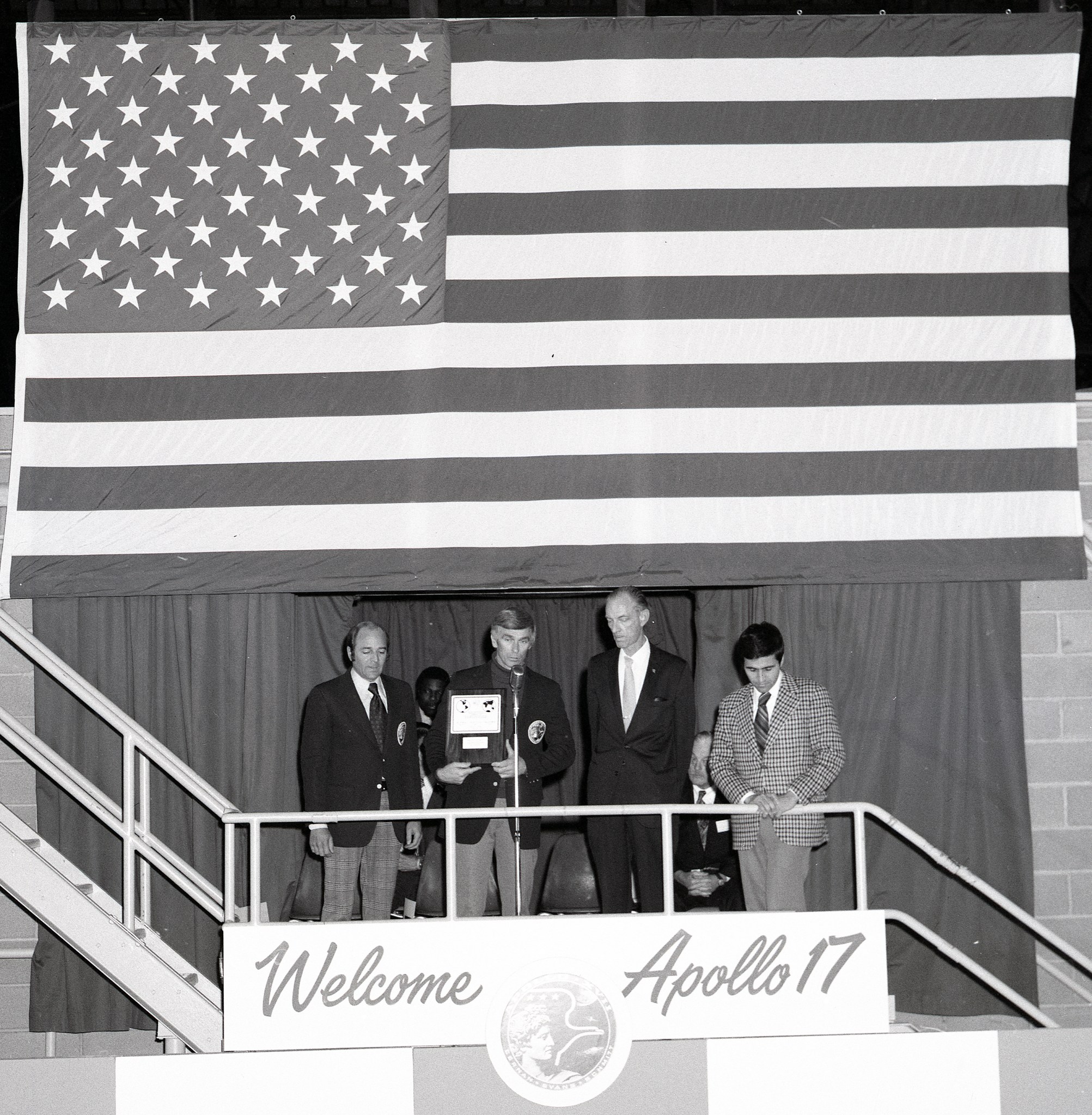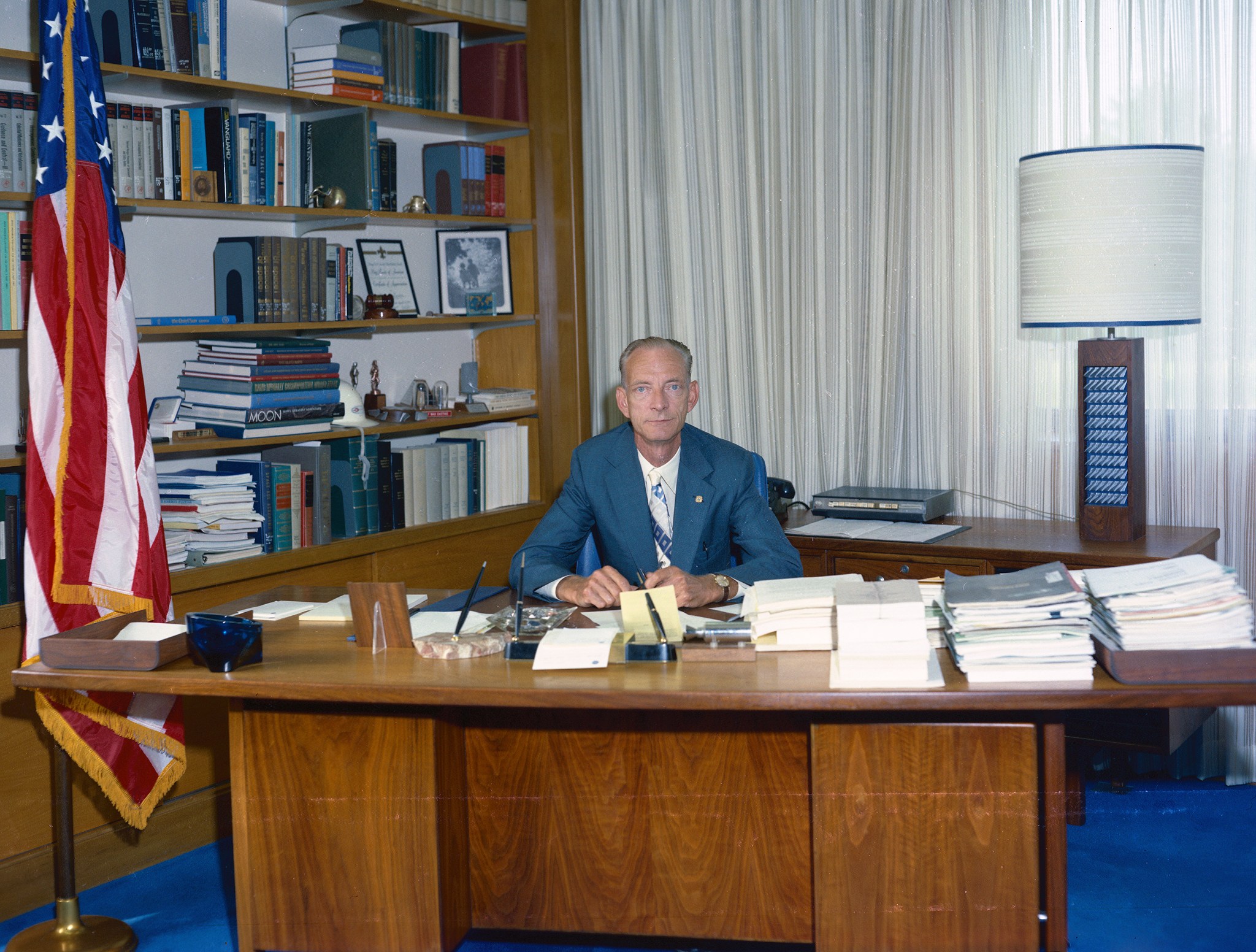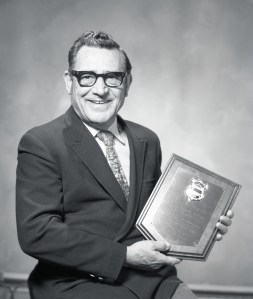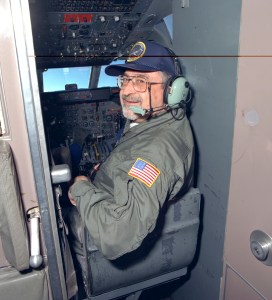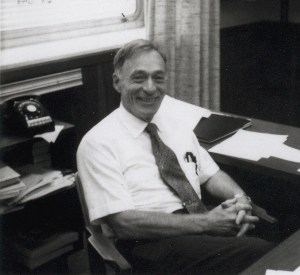Citation
Bruce Lundin started in 1943 as a mechanical engineer working on the problem’s of piston engines, but quickly moved to the emerging field of jet engines. A constant advocate for the expansion and evolution of work done at the center and also within the agency, he was one of the most vocal in advocating for the NACA’s leadership in space-related activities. His 1957 paper “Some Remarks on a future policy and course of action for the NACA would go on to become the basic template for which NASA’s structure would be based, with the NACA serving as its core. From 1969 to 1977, he served as the center director, navigating the center through one of its most difficult periods.
Biography
Bruce Lundin’s 35-year career began in 1943 when the National Advisory Committee for Aeronautics (NACA) lab that would become the NASA Glenn Research Center was still known as the Aircraft Engine Research Laboratory. At first Lundin worked on engine cooling and heat transfer for piston engines, but almost immediately he was thrown into the secret new field of jet engines. This work between 1943 and 1946 yielded concepts such as the afterburner, variable-area nozzle, and reverse thruster— components that remain basic elements of many modern jet aircraft.
At only 33 years old, Lundin was promoted to chief of the Engine Research Division (1952 to 1958), overseeing full-scale engine testing in simulated flight conditions. The research contributed significantly to the performance of modern commercial and military aircraft. During this period, Lundin also was responsible for establishing requirements for future aircraft and ramjet engines. In this role, he advocated the expansion of the Lab’s research to spacecraft propulsion. Although others at the lab were also interested in space, he was among the most vocal. Lundin felt passionately that the NACA should not only participate in, but coordinate, all space-related research. The launch of Sputnik in October 1957 resulted in widespread calls for the establishment of a national space program.
One Sunday afternoon in December 1957, Lundin drafted his seminal “Some Remarks on a Future Policy and Course of Action for the NACA.” This document outlined in detail the formation of a new space agency based on the NACA structure. It advocated a broad range of space research to be coordinated by the NACA, warned against concentrating on any single project, and called for the establishment of a new laboratory dedicated to space. Lundin’s report, updated by associate director Abe Silverstein and renamed “Lewis Laboratory Opinion of a Future Policy and Course of Action for the NACA,” was presented to NACA Headquarters and served as the basic template for NASA.
With the establishment of NASA in 1958, Lundin was named associate director of the NASA Lewis Research Center. He was responsible for planning and directing research for the entire center. Under Lundin’s guidance, Lewis expanded its space propulsion and power research with the development of electric-, solar-, and nuclear-power-generating systems for spacecraft and high-energy chemical, electric, and nuclear propulsion systems.
Lundin was a strong advocate for Lewis’ involvement in program management. There was some controversy regarding the former NACA lab’s being too involved in development. When Center Director Abe Silverstein reorganized the center in 1961 in an effort to segregate the research and development work, Lundin was put in charge of all Lewis development work. This would prove to be a substantial role with the addition of the Centaur, Agena, and M–1 rocket programs the following year. The project management of launch vehicles would become one of the center’s greatest successes.
In 1969, Bruce Lundin became center director and navigated the center through its most difficult period. The center’s budget was significantly slashed as the Apollo program wound down. Layoffs occurred and facilities were mothballed. In an effort to boost morale and generate staff support for Lewis’s goals, Lundin instituted the Lewis Acquainting Wage Board, Administrative and Research Employees with New Endeavors of Special Significance (AWARENESS) program in 1974. Talks by Lundin, frequent ceremonies, film specials, and newspaper articles were used to recognize Lewis’s accomplishments, programs, and staff.
Lundin sought new areas of research and increased Lewis’s research efforts on energy-efficient engines and noise reduction for the airline industry. He was convinced that the staff’s long history of energy-conversion work for space applications could be applied to new methods of providing clean, renewable energy. In the midst of the oil embargo, Lewis undertook a wide range of alternative energy programs. One of the most successful efforts was a wind energy program in partnership with what is today the Department of Energy. This program set a precedent for what has become an entire wind turbine industry. During this time, Lewis also developed solar-powered electric systems for remote areas and villages, batteries for electric automobiles, and the efficient Stirling automotive engine. Lundin was able to successfully mold Lewis into a leading energy-conversion laboratory.
Lewis’s greatest achievements during Lundin’s tenure were in the Launch Vehicles Division. The group was responsible for not only maintaining and updating the Centaur rocket but for integrating the payload with the Atlas and Titan boosters. Over 30 high-profile missions were launched during Lundin’s term, including Pioneer 10, which was the first spacecraft to explore the outer solar system; Mariners 6 and 7, which mapped Mars; Mariner 10, which orbited Venus and Mercury; and the Viking spacecraft, which placed two rovers on the Mars surface.
Lundin retired in 1977 after a long, distinguished career as an engineer, manager, and director of major programs. His efforts provided a firm foundation for subsequent achievements in aeronautics, space, and energy. He continually demonstrated outstanding leadership in planning research, organizing resources for effective and timely execution, and inspiring extraordinary efforts from his staff to solve complex problems. Bruce Lundin passed away at the age of 86 on January 24, 2006.
Related Documents
- Lundin Biographical Sketches (1956-73)
- National Academy of Engineering Memorial Tribute (2014)
- Lundin Center Director Biography (2023)

